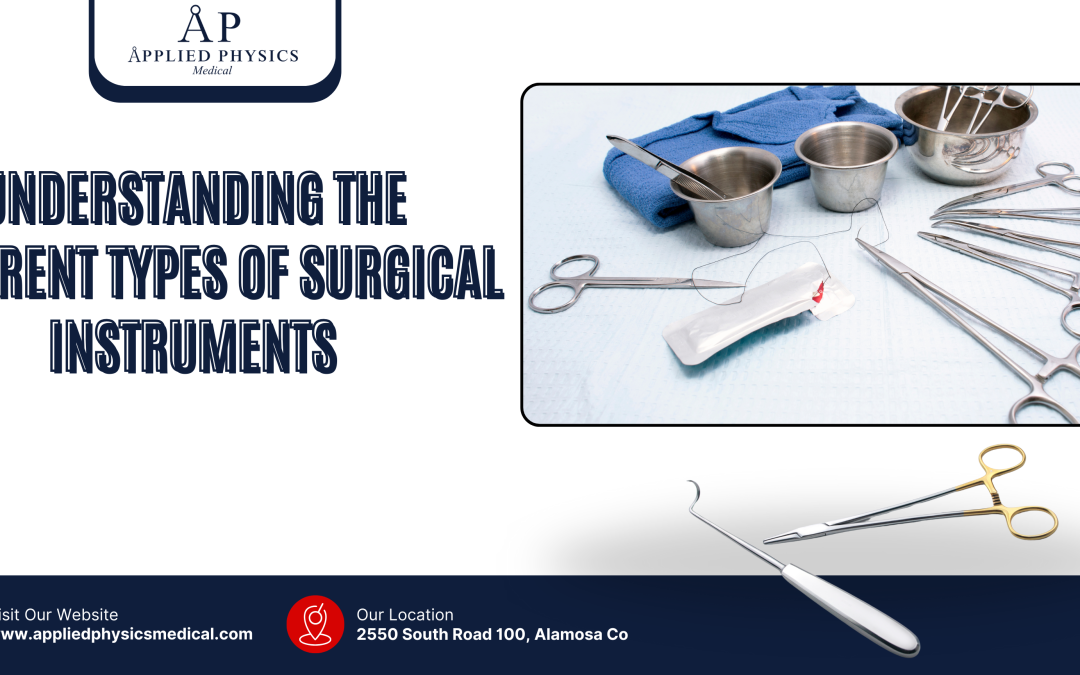Introduction
Surgical instruments are tools designed to perform specific actions during surgical procedures. These instruments are crucial for the success of any surgical operation, as they aid in cutting, dissecting, grasping, holding, and suturing tissues. The history of surgical instruments dates back to ancient times, with early civilizations using crude tools made from stone, wood, and metal.
Over time, advancements in technology and medical knowledge have led to the development of a wide array of surgical instruments that are essential for modern surgical practices. Surgical instruments are typically made from high-quality stainless steel, which is durable, resistant to corrosion, and can be sterilized easily. They come in various shapes and sizes, each designed for a specific purpose.
Surgeons and other medical professionals must have a thorough understanding of the different types of surgical instruments and their uses to ensure the safety and success of surgical procedures.
Key Takeaways
- Surgical instruments can be classified into basic and specialty instruments, each serving specific purposes in different procedures.
- Basic surgical instruments include scissors, forceps, and retractors, while specialty instruments are designed for specific procedures such as neurosurgery or orthopedics.
- Advancements in surgical instrument technology have led to the development of more precise and efficient instruments, improving patient outcomes and surgical procedures.
- Proper care and maintenance of surgical instruments are crucial to ensure their longevity and effectiveness in the operating room.
- Choosing the right surgical instruments for different procedures is essential for the success of the surgery and the well-being of the patient.
Classification of Surgical Instruments
Surgical instruments can be classified into various categories based on their function and the type of procedure they are used for. Some common categories include cutting and dissecting instruments, grasping and holding instruments, hemostatic forceps and clamps, retractors, and specialized instruments for specific procedures. Each category of surgical instruments plays a unique role in the surgical process and requires specialized training for proper use.
Cutting and dissecting instruments, such as scalpels and scissors, are used to make incisions and separate tissues during surgery. Grasping and holding instruments, such as forceps and tissue-holding clamps, are used to hold tissues or organs in place during the procedure. Hemostatic forceps and clamps are designed to control bleeding by compressing blood vessels or tissues.
Retractors are used to hold back tissues or organs to provide better visibility and access to the surgical site. Specialized instruments are designed for specific procedures, such as neurosurgery, orthopedic surgery, or plastic surgery.
Basic Surgical Instruments and Their Uses
Basic surgical instruments are essential tools used in a wide range of surgical procedures. Some of the most commonly used basic surgical instruments include scalpels, scissors, forceps, needle holders, retractors, and surgical probes. Scalpels are used for making precise incisions in the skin and tissues.
Scissors come in various shapes and sizes and are used for cutting tissues, sutures, or bandages. Forceps are used for grasping and holding tissues or objects during surgery. Needle holders are used to grasp and manipulate needles during suturing.
Retractors are used to hold back tissues or organs to provide better visibility and access to the surgical site. Surgical probes are used to explore wounds or body cavities. Each basic surgical instrument has a specific purpose and requires proper training for safe and effective use.
Surgeons and other medical professionals must be familiar with the different types of basic surgical instruments and their uses to ensure the success of surgical procedures.
Specialty Surgical Instruments for Specific Procedures
| Instrument Type | Function | Examples |
|---|---|---|
| Scalpel | Cutting and dissecting tissue | No. 10, No. 15 |
| Forceps | Grasping and holding tissue | Adson forceps, Kelly forceps |
| Scissors | Cutting and dissecting tissue | Mayo scissors, Metzenbaum scissors |
| Retractors | Exposing and holding back tissue | Deaver retractor, Richardson retractor |
| Clamps | Controlling blood flow and securing tissue | Hemostats, Bulldog clamps |
In addition to basic surgical instruments, there are also specialty surgical instruments designed for specific procedures or medical specialties. These instruments are tailored to meet the unique requirements of certain surgeries and play a crucial role in achieving successful outcomes. Some examples of specialty surgical instruments include neurosurgical instruments, orthopedic instruments, cardiovascular instruments, ophthalmic instruments, and plastic surgery instruments.
Neurosurgical instruments are designed for procedures involving the brain, spinal cord, and nervous system. These instruments are often delicate and precise, as they are used in highly sensitive areas of the body. Orthopedic instruments are designed for procedures involving the musculoskeletal system, such as bone fractures or joint replacements.
These instruments are often sturdy and durable to withstand the demands of orthopedic surgery. Cardiovascular instruments are designed for procedures involving the heart and blood vessels. These instruments must be able to withstand high pressures and delicate tissues.
Ophthalmic instruments are designed for procedures involving the eyes and vision. These instruments are often small and delicate to work in the confined space of the eye. Plastic surgery instruments are designed for procedures involving cosmetic or reconstructive surgery.
These instruments are often specialized for specific techniques or procedures.
Advancements in Surgical Instrument Technology
Advancements in technology have led to significant improvements in surgical instrument design and functionality. Modern surgical instruments are now more precise, durable, and ergonomic than ever before, allowing surgeons to perform complex procedures with greater accuracy and efficiency. One of the most significant advancements in surgical instrument technology is the development of minimally invasive surgical techniques, such as laparoscopy and robotic surgery.
Minimally invasive surgery involves making small incisions and using specialized instruments to perform procedures with minimal disruption to surrounding tissues. This approach offers numerous benefits for patients, including reduced pain, shorter recovery times, and lower risk of complications. The development of advanced imaging technologies, such as endoscopy and ultrasound, has also improved the visualization of internal structures during surgery, allowing for more precise and targeted interventions.
In addition to technological advancements, there has also been a growing focus on the development of disposable surgical instruments to reduce the risk of cross-contamination and infection. Disposable instruments offer a cost-effective and convenient solution for certain procedures while ensuring patient safety.
Proper Care and Maintenance of Surgical Instruments
Proper care and maintenance of surgical instruments are essential to ensure their longevity, functionality, and safety for patients. Surgical instruments should be cleaned, sterilized, and stored according to established protocols to prevent contamination and infection. Regular inspection and maintenance of instruments are also necessary to identify any signs of wear or damage that could compromise their performance during surgery.
Cleaning of surgical instruments involves removing any visible debris or organic material using enzymatic cleaners or detergents. After cleaning, the instruments must be sterilized using heat or chemical methods to eliminate any microorganisms that may be present. Proper storage of surgical instruments is also crucial to prevent damage or contamination between uses.
Regular inspection of surgical instruments should be conducted to identify any signs of wear, corrosion, or malfunction that could affect their performance during surgery. Damaged or worn-out instruments should be promptly repaired or replaced to ensure the safety and success of surgical procedures.
Choosing the Right Surgical Instruments for Different Procedures
Choosing the right surgical instruments for different procedures is essential to ensure the success and safety of surgeries. Surgeons must consider various factors when selecting instruments, including the type of procedure, the specific anatomical structures involved, patient characteristics, and surgeon preference. Different procedures may require different sets of instruments tailored to meet their unique requirements.
For example, orthopedic surgeries may require specialized bone-cutting and shaping instruments, while cardiovascular surgeries may require delicate vascular clamps and suturing devices. Surgeons must also consider the size and shape of the patient’s anatomy when selecting instruments to ensure proper fit and functionality. In addition to selecting the right instruments, surgeons must also ensure that they have a thorough understanding of each instrument’s use and functionality.
Proper training and familiarity with surgical instruments are crucial for safe and effective use during surgery.
Conclusion
Surgical instruments play a crucial role in modern surgical practices, aiding in various aspects of surgical procedures such as cutting, dissecting, grasping, holding, and suturing tissues. Understanding the different types of surgical instruments and their uses is essential for surgeons and other medical professionals to ensure the success and safety of surgeries.
With advancements in technology, proper care and maintenance practices, as well as the availability of specialty instruments for specific procedures, surgeons can now perform complex surgeries with greater precision and efficiency than ever before. By choosing the right surgical instruments for different procedures and ensuring proper training in their use, surgeons can continue to advance the field of surgery and improve patient outcomes.


